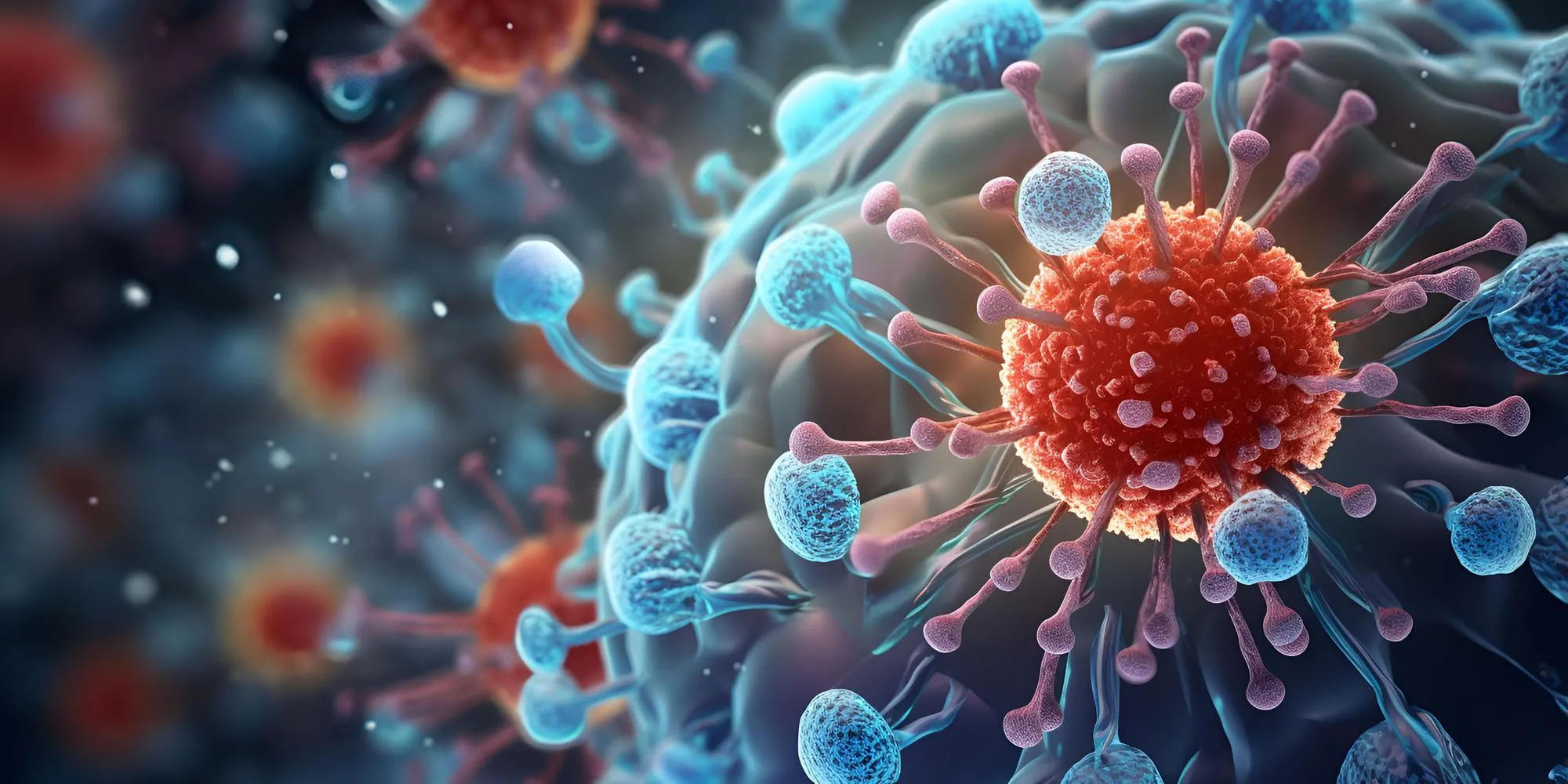Introduction
Non-small cell lung cancer (NSCLC) is the most common form of lung cancer, comprising a majority of cases and accounting for a significant mortality rate worldwide. Recent advancements in cancer immunotherapy, specifically immune checkpoint therapies (ICTs) targeting the PD1/PD-L1 pathway, have brought new hope to patients with NSCLC. These therapies work by reactivating the immune system to recognize and attack cancer cells. However, determining which patients are likely to respond to such treatments remains a challenge.
Study Highlights
A study published in the “Journal for Immunotherapy of Cancer” on May 6, 2019 DOI: 10.1186/s40425-019-0589-x presents a promising automated image analysis solution aimed at predicting NSCLC patients’ responses to anti-PD-L1 therapy more effectively than manual PD-L1 scoring.
Research Findings
In the study, researchers introduced an automated image analysis method to evaluate the prognostic value of the combination of PD-L1+ cell and CD8+ tumor-infiltrating lymphocyte (TIL) densities, known as the CD8xPD-L1 signature, in baseline NSCLC tumor biopsies. The study involved the analysis of archival or fresh tumor biopsies from 163 patients in a Phase 1/2 trial (NCT01693562) to evaluate durvalumab’s effectiveness, an anti-PD-L1 therapy across multiple tumor types including NSCLC.
Digital images of the biopsies were automatically scored for PD-L1+ and CD8+ cell densities using customized algorithms applied with Developer XD™ 2.7 software, leading to significant findings. Patients who received durvalumab and were CD8xPD-L1 signature-positive had a median overall survival (OS) of 21.0 months versus just 7.8 months for signature-negative patients. This new signature provided better stratification of OS than several current evaluation methods, including high densities of PD-L1+ cells or manually assessed PD-L1 expression of ≥25% tumor cells.
Moreover, the CD8xPD-L1 signature did not stratify OS in non-ICT patients. However, the density of CD8+ TILs alone did show a prognostic value: patients with a high density of these cells had a median OS of 67 months compared to 39.5 months for those with low density.
Method and Evaluation
The study utilized automated digital image analysis to quantify the densities of PD-L1+ and CD8+ cells within the tumor microenvironment. This method avoids the subjectivity of manual scoring and potentially allows for a more accurate assessment of the immunogenicity of NSCLC tumors.
The researchers reported that this automated CD8xPD-L1 signature could offer a more reliable method to identify patients who might benefit from therapies like durvalumab. Additionally, the study added evidence to the growing importance of CD8+ TILs prognosis in NSCLC patients who do not undergo ICT.
Ethical and Competing Interests Considerations
The study (NCT01693562) adhered to the Declaration of Helsinki and Good Clinical Practice guidelines, and appropriate institutional review boards approved the study protocol and informed consent documents. The study also confirmed there were no individual data used for publication. Employees from AstraZeneca and Definiens AG, companies involved in the study, disclosed potential competing interests as they own stock/options in AstraZeneca and employment with Definiens AG.
Implications for the Future
The potential for automated image analysis in predicting anti-PD-L1 therapy response presents a significant advance in personalized medicine for NSCLC. It lean towards a future where treatments are better tailored to patient-specific tumor characteristics, and outcomes are improved by concentrating therapies on those most likely to benefit.
Conclusions
This study’s findings provide a strong rationale for the incorporation of the CD8xPD-L1 signature into future clinical trials and potential clinical practice, replacing or complementing conventional PD-L1 manual scoring methods. Automated image analysis has the potential to fine-tune the selection process for patients suitable for anti-PD-L1 therapy, thereby optimizing therapeutic outcomes in NSCLC treatment.
Keywords
1. NSCLC immunotherapy
2. PD-L1 biomarker
3. CD8+ TILs
4. Automated image analysis
5. Durvalumab therapy
References
1. Althammer, S., et al. (2019). ‘Automated image analysis of NSCLC biopsies to predict response to anti-PD-L1 therapy.’ Journal for Immunotherapy of Cancer, 7(1), 121. doi:10.1186/s40425-019-0589-x
2. Ilcus, C., et al. (2017). ‘Immune checkpoint blockade: the role of PD1-PD-L axis in lymphoid malignancies.’ OncoTargets and Therapy, 10:2349. doi:10.2147/OTT.S133385
3. Ribas, A., & Wolchok, J. D. (2018). ‘Cancer immunotherapy using checkpoint blockade.’ Science, 359 (6382):1350–1355. doi:10.1126/science.aar4060
4. Brahmer, J. R., & Pardoll, D. M. (2013). ‘Immune checkpoint inhibitors: making immunotherapy a reality for the treatment of lung cancer.’ Cancer Immunol Res, 1:85–91. doi:10.1158/2326-6066.CIR-13-0078
5. Reck, M., et al. (2016). ‘Pembrolizumab versus chemotherapy for PD-L1–positive non–small-cell lung cancer.’ N Engl J Med, 375:1823–1833. doi:10.1056/NEJMoa1606774.
